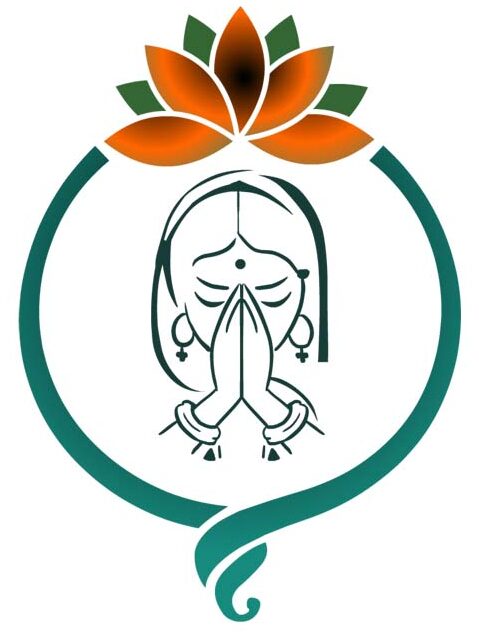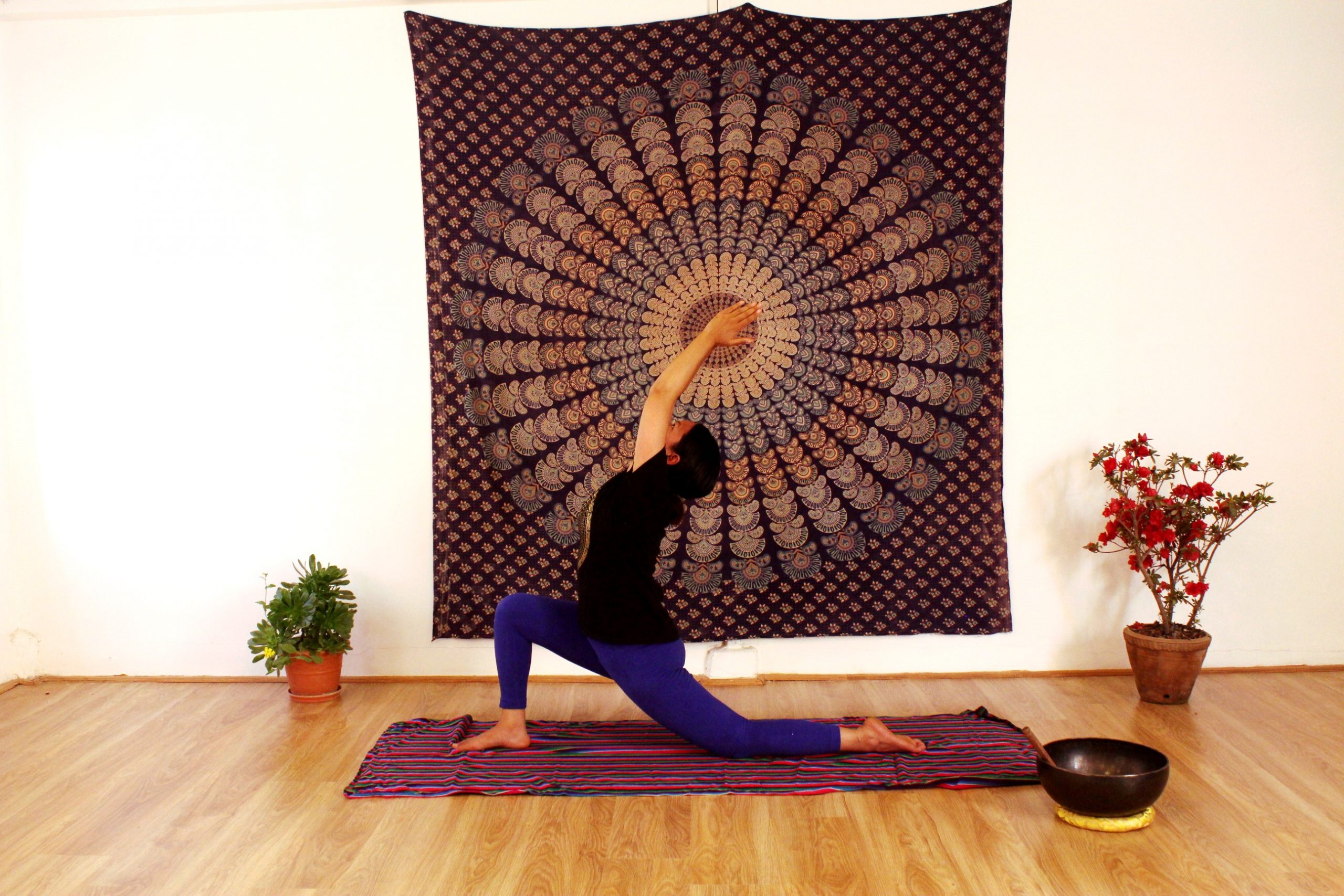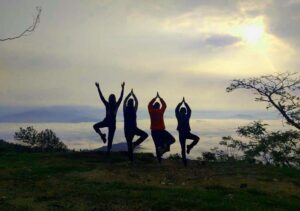yoga knowledge for better life
Meaning of Yoga
Yoga is a scientific discipline which has gained immense popularity in the present times. At present it has emerged as a popular form of exercises that not only ensures good physical health but also sound mental as well as spiritual health. Some questions regarding Yogic practices have been raised frequently in the minds of people regarding its definition, history as well as advantages and disadvantages. But nowadays almost everyone has less or more acquainted to it and its importance.
There are many practitioners of yoga from childhood to old age, but practicing yoga without proper knowhow is very harmful. Most people in the world today suffer from various types of diseases. Such patients are increasing day by day. Sleep deprivation, hypertension and depression patients are increasing day by day. Yoga practice addresses most of these diseases. Considering this, people are always sure to become healthy, better life and take the lead in the development of society and the country.
One should always remain calm while practicing asanas. It is best to start under the supervision of a teacher while practicing yoga initially. There may be more disadvantages than advantages if proper methods are not followed. Therefore a skilled teacher is required in the beginning. Yogic exercises should not be done forcibly. Asanas should be practiced prioritizing the capacity of the body.
One should take slow and deep breath while doing Yoga. Most of the asanas have counter asnas. After each complicated asana it is good to practice counter asanas. Chanting ‘Om Shanti’ before beginning the exercise brings peace to the mind. Peaceful state of the mind and body is necessary before starting Yoga. Before doing yoga, it is necessary to calm the mind and body. It is important to start practicing yoga only after meditating for some warm up exercises.
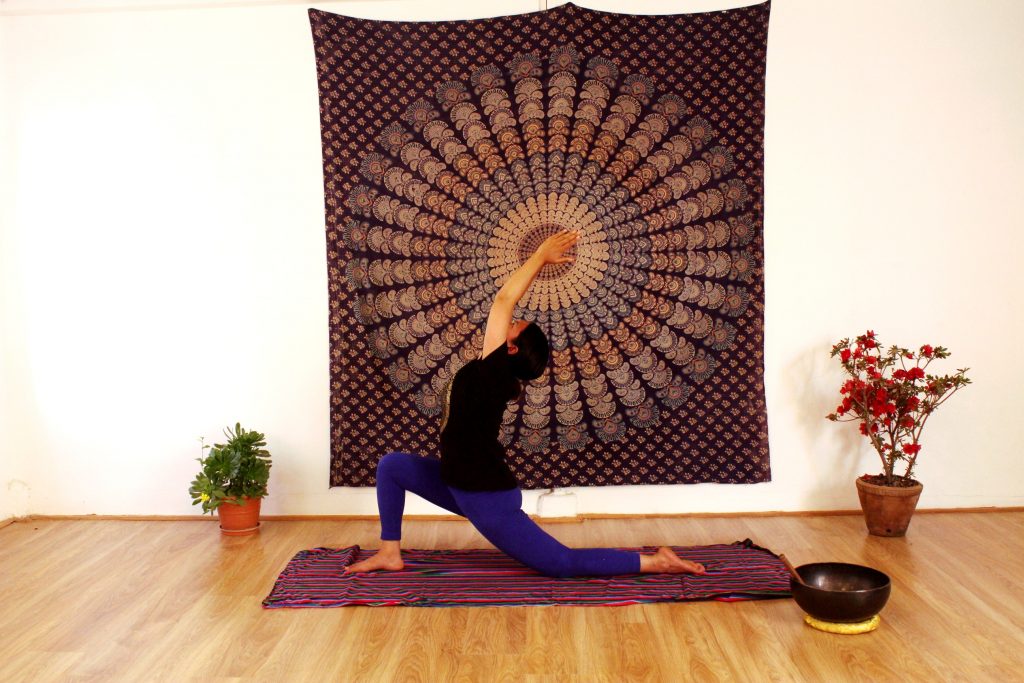
Yoga poses should be practiced on an empty stomach in the morning as far as possible. Pregnant and menstruating women should only practice some of the simple exercises. People having high or low blood pressure issues or any kind of pain on their waist, knees or arms should not take strain while doing Yoga asanas. Asana should always be done in the open and aerated space with sufficient oxygen supply. There should be clean and thick mattress or Yoga mat.
At the end of yoga practice, it is necessary to sit in the Shavasana for about 3 to 5 minutes, which calms the body and mind, better life & health and keeps the person fresh again. Pranayama is the only method that helps a person to become healthy and live longer. According to the science of yoga Kriya Yoga such as Jala Neti, Sutra Neti and Dhauti should be practiced after taking bath with cold water and then only one should begin practicing Yoga asanas.
Yoga helps the body to stay healthy and able to sit in a static pose for a long time. Meditation is very important for physical and mental health and Yoga is the first step towards meditation.
The History of Yoga
As human consciousness began to develop, people started thinking about their health, ease and comfort. They began to concentrate on peace of the mind and good health. They kept exploring the inner aspects of human life and began to think about how to achieve peace of mind and better life. In pursuit of it, they went on to learn about peace of mind and its power. In course of time, people concentrated themselves deeper and deeper and they explored more about the peace of mind and its power.
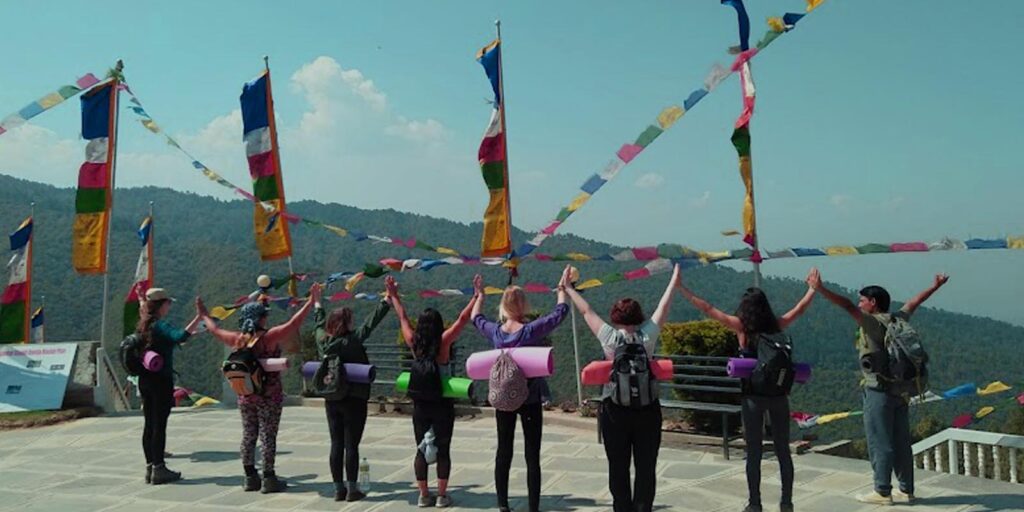
This immense enthusiasm ultimately led us to the meditation. The literal meaning of ‘Yoga’ is ‘union.’ The word has been originated from its Sanskrit root ‘Yuj’ which means ‘to unite.’ Yoga has two word meanings, ‘union’ and ‘samadhi, i.e. the meditative state of consciousness’. To attain Samadhi connection to the self is necessary. And, yoga further means the unison to the divine soul.
Yoga has been mentioned in the most ancient Hindu scripture Rig Veda
The Yajna of a learned man remains incomplete bereft of Yoga. Yoga is the control of the mind, that duty involved in Karma. Rigveda 1-18-7
Another verse n the same book says “May the same God be oriented towards our Samadhi, by his mercy we may we benefit Samadhi, repute, and static wisdom.” Rig Veda 1-5-3
Authentic depiction of yoga practice can be seen in the statues found during the Indus Valley Civilization circa 3000 BC. The authentic book of yoga, is ‘Yoga Sutra’, which was composed by Patanjali in 200 BC. This is the first book written on yoga. In Hindu, Jain and Buddhism, different types of yogas are classified. Upanishads are considered to be its major sources. In Vedic times yajna and yoga were of great importance, wherein four types of ashram were arranged.
At the Brahmacharya Ashram, the teachings of the Vedas, along with the teaching of weapons and yoga, were also provided. Rig Veda, which is considered to be written between 1500 BC From 1000 BC, mentions this for the first time. Before that yogic practices were preserved on the basis of memory for thousands of years. According to Indian philosophy, the Vedas are the words of God, and are believed to be nearly two billion years old. Other differences about its antiquity are also found. Osho, Rajneesh opines the Rig Veda almost 90 thousand years old. From 563 to 200 BC, the three organs of yoga were the penance, self-education and God holding. This is called Kriya Yoga. During the Jaina and Buddhist awakening, it is found to transform into Yama and Niyama.
The practice of Yamas and Niyamas ie. non-violence, truth, celibacy, non-stealing, destitute of possession, purity, contentment, penance and self-restraint are very prevalent, yet yoga is not given a proper form. Earlier in 200 BC, Patanjali categorized the Yoga Vidya as mentioned in Vedas. After Patanjali the practice of yoga became common and many yogic institutes, ashrams and monasteries were established. Those institutes were providing education on RajaYoga. The yoga is believed to have originated from the Lord Shiva, who is also known as Adi Yog. Later, Lord Krishna, Mahavira and Buddha explained in their own way. After this, Patanjali gave it a systematic shape. Later the Siddhapatha, Shaivapatha, Nathpatha, Vaishnavapatha and Shaktapatha extended it in their own way.
Yoga for yoga knowledge for better life & health
At present yoga is found in all countries of the world. Body and mind develop through yoga practice. Yoga exercises help to make the body feel agile, stress free and fear free. Since yoga causes stress on all the body muscles, it helps to make the body flexible and develop intelligence. Enhancing up in immunity it helps to create the condition that a person should never have the disease.
Yoga practice should be done daily. Maintaining the balance of mind and body through yoga creates a positive and positive view of people. Yoga is an indispensable topic in a person’s daily life, which will keep people healthy for a long time. There are some precautions to be taken in yoga. If a person has been ill for a long time or a person has to be cautious with diabetes or high or low blood pressure and other illnesses, care needs be taken.
Similarly pregnant women should take special precautions and take expert advice before doing any of the asanas. But most of the asanas of yoga are suitable for the elderly or the sick, but they also need skilled tutor. A person who practices daily yoga has to eat nutritious foods and many fresh vegetables and fruits. In order to make the body flexible, it is necessary to perform sun salutations daily. At the end of yoga practice, one should practice Shavasana.
Importance of Yoga
Through yoga, the body, mind and brain can be completely healed. Yoga has been done to achieve long life & better life achievement of Siddhi and Samadhi. Yoga is an important part of all religions.
Types of Yoga
There are many types of yoga in the Hindu scriptures like Vedas, Puranas, etc. Lord Krishna has mentioned three types of yoga. They are. Jnana Yoga, Karma Yoga and Bhakti Yoga. Apart from this, there is also Dharma Yoga, Tantra Yoga and Naad Yoga. Indian philosophy is divided into six philosophies. They are
1. Nyaya
2. Vaisheshik
3. Mimansa
4. Sankhya
5. Vedanta and
6. Yoga.
Similarly, ten types of yoga are mentioned in Yoga Pradipika. They are
1. Raj Yoga, 2. Ashtanga Yoga, 3. Hatha Yoga, 4. Laya Yoga,
5. Dhyana Yoga, 6. Bhakti Yoga, 7. Kriya Yoga, 8. Mantra Yoga,
9. Karma Yoga and 10. Jnana Yoga.
Ashtanga Yoga Ashtanga
Yoga has great importance and popularilty. Ashtanga Yoga, the eight limbs of yoga that combine to sum up all religions. They are,
1. Yama, 2. Niyama, 3. Asana,
4. Pranayama, 5. Pratyahara, 6. Dharana,
7. Dhyana, 8. Samadhi.
The eight limbs of Yoga are as below:
1. Yama:- I n Yama there are Truth, Non-violence, chastity, non[1]possissiveness and non-stealing
2. Niyama:- in Niyama there are Purity, Content, austerity, self-reflection and attunement to the supreme consciousness
3. Asana:- There are different types of asanas. Different asanas are mentioned in the scriptures like Hath Yoga Pradeepika, Gharonda Samhita and Yogashikhopanishad.
4. Pranayama: It is the practice of breath control in yoga. In modern yoga as exercise, it consists of synchronising the breath with movements between asanas.
5. Pratyahara:- it is the control of the self. It is restraining the senses and focusing in the self.
6. Dharana:- Dharana is the concentration of the mind on the specific point.
7. Dhyana:- Dhyana is meditation. It is art of living in the present being free from the worries of the future and past.
8. Samadhi:- Samadhi is the salvation. It has two aspects; 1. Sampragyata and 2. Asampragyata
What is Yoga ?
Yoga means unison or to add. For example, say 1 + 2 = 2. In Ayurveda, it is said that yoga is combination of more than one herb. In astrology it is found that the collection of planets is Yoga. Below are some excerpts to make it easier to understand.
Surya Namaskara
In Surya Namaskara there are two Sanskrit words, “Surya’ meaning ‘the Sun‘ and ‘Namaskara’ meaning ‘greeting with courtesy joining both hands‘. By its name it is clear that Surya Namaskara, the way to meditate on the sun. This is a very important exercise. In the science of yoga, this exercise is recommended for the Brahma Muhurta or the dawn. Surya Namaskar is practiced turning to the eastern direction at the dawn. There are 12 postures of Surya namaskara and each posture has distinct mantra. Therefore, in addition to physical exercise, Surya Namaskara has the religious importance too. This salutary method also combines 10 postures and two Namasakara positions at the beginning and ending.
What is Pranayama
The fourth of the eight limbs of yoga (Ashtanga) is pranayama. Pranayama has been given different meanings by many sages of the ancient time. It has been made from two words, ‘Prana’ meaning ‘the soul’ and ‘Ayama’ meaning ‘the dimension’. Its etymological meaning is to prolong the soul (breathing) and to prolong the life (vitality), and the dimension means to give life or increase power. In simple language Pranayama is the extension of the power of the soul to promote it. Or it is pranayama to help control the breath and prolong it. As it said in Hatha Pradipika:
Cale vāte calaṁ cittaṁ niścale niścalaṁ bhavet |
Yogī sthāṇutvamāpnoti tato vāyuṁ nirodhayet ||
or
When the vital air moves the mind moves; when it does not move, the mind remains motionless due to that, the Yogī attains steadiness. Hence, the Yogī should restrain and control the vital air.
yāvad vāyuḥ sthito dehe tāvaj jīvanam ucyate |
maraṇaṁ tasya niṣkrāntis tato vāyuṁ nirodhayet ||
or
As long as there is an air (soul) in the body, it remains alive. When the air (soul) leaves the body that is known as death. Therefore, air must be restrained. Therefore, the dimension of life, i.e. the air, is the act of controlling and controlling the ability of breathing and exhaling, this is Pranayam.
Conditions
There are three conditions of Pranayam
1. Puraka
2. Kumbhaka
3. Rechaka In this list one more condition is there, i.e. Bahya Kumbhaka.
1. Puraka
Puraka is the process of breathing in subtly controlled way. While inhaling there should be a proportionate rhythm of breathing.
2. Kumbhaka:
Kumbhaka is the process of holding the breath that has been inhaled. This should also be in a maintained proportion and rhytrhm.
3. Rechaka:
Rechaka is the process of exhaling the air in a subtly controlled way in right time. This process is also done maintaining the proportion and rhythm.
Bahya Kumbhaka:
After releasing of the breath, it is hold for a moment this is called Bahya Kumbhaka. Puraka, Rechaka, Kumbhaka and Bahya Kumbhaka should be practiced in the ratio of 1:3:2:1. Literally one can spend five seconds to inhale, 15 seconds to hold it, 10 secondsto exhale and five seconds to hold it again. Beginners can start with the ratio of 1:1:1:1 or they can spend equal time in inhaling, holding, exhaling and holding.
Major Pranayamas
1. Naadi-shodhan
2. Bhastrika
3. Ujjjai
4. Bhramari
5. Kapalbhati
6. Kaivali
7. Kumbhaka
8. Dirgha
9. Sitkaari
10. Sheetali
11. Murchha
12. Surya Bhedana
13. Chandra Bhedana
14. Pranava
15. Agnisara
16. Undintha
17. Nasagra
18. Plavani
19. Sheetayu
Other Pranayamas
1. Anuloma-Viloma
2. Agni Pradipta Pranayama
3. Agni Prasarana Pranayama
4. Ekanda Stambha Pranayama
5. Sitkari Pranayama
6. Sarvadwara Baddha Pranayama
7. Sarvanga Stambha Pranayama
8. Samta Vyahriti Pranayama
9. Chaturmukhi Pranayama
10. Prachchhardana Pranayama
11. Chandra bhedana Pranayama
12. Yantragamana Pranayama
13. Vamarechana Pranayama
14. Dakshinarechana Pranayama
15. Shakti Prayoga Pranayama
16. Tibandha Rechaka Pranayama
17. Kapalabhati Pranayama
18. Hridaya Stambha Pranayama
19.Madhya Rechana Pranayama
20. Nibandha Kumbhaka Pranayama
21. Urdhwa Mukha Bhastrika Pranayama
22. Mukhapuraka Kumbhaka Pranayama
23. Vayuviya Kumbhaka Pranayama
24. Vakshasthala Rechana Pranayama
25. dirgha Shwas Prashwas Pranayama
26. Prahyabhnwar Kumbhaka Pranayama
27. Shanmukhi n’rechana Pranayama
28. Kantha VAtuda puraka Pranayama
29. Sukha Prasarana Puraka Kumbhaka Pranayama
30. Nadi Shodhan or Nadi Avarodha Pranayama
Benefits of Pranayama
- Pranayama improves the quality inhale of oxygen while breathing.
- It helps different body cycles (Chakras) remain functioning by opening clogged nerves and arteries.
- It makes a person strong, eager, and brave.
- Revitalizes both the heart and the mind.
- Connects the body and mind while keeping the individual healthy.
- Improves a person’s quality of life.
- Pranayama knowledge for better life
Mantra
Mantra refers to a word or a sound that is supposed to have spiritual power. It is a kind of wave, which deeply affects our brain. When the mantra is pronounced, its waves act to open the nerves of the brain. The only mantra for sound is important, it is not meant for anything. Mantra science is used to create a pleasant atmosphere within a person’s body and mind. Our sages have told that when a baby is born and he speaks for the first time he has to be told to recite the mantra of Aum and when he is able to speak, he is asked to recite the Gayatri Mantra.
In Australia, an experiment was done on Aum and the Gayatri Mantra and it was found that the alpha waves of the person’s mind were awakened because of chanting of Mantras. This proves is that these Mantras directly affect our mind and our body.
It is believed that 90% of our brain remains unused. If someone hears what we are talking about, it may affect that person. The person who hears may be sad or happy, he may laugh or cry. This all is effect of what we speak. The mind directly reflects what we say, and we are impressed by that speech. In this way, the effect of the speech we speak is directly on the mind, and Mantras also work in the same way. Thus Mantras have power, they directly affect the mind.
The Aum mantra directly affects the frontal part of the brain. If it is pronounced well, it has a direct effect on the optical gland of our brain. There are a few things to pay attention to when chanting Mantras. As we recite a Mantra, our tongue has to do many things, like chanting Gayatri Mantra, the tongue touches many places in the mouth, twists, vibrates and changes the shape of the lips. That means we have to notice how our body is functioning during chanting of the mantras, what thoughts are frequently appearing in the brain because of listening to the chanting of Mantras, what effects of the Mantras are seen on the body.
It is important to know the details. The chanting of the mantra should not cause the mind to be restless. In calm mood, Mantras should be recited. When Mantras are chanted keeping the mind calm, then the nerves of the heart are activated and the conscience is purified. Unless the conscience is cleansed, one cannot go for meditation.
Mudra
This nature is made up of five elements so is our body. Similarly, there are five elements in the five fingers of our hands. Mudra represents these five elements. Mudra balances these five elements of the nature and body. The misbalance of these five elements makes a person sick. If the five elements are not in equilibrium, the person is unwell. Mudra helps to balance these elements all the time. There are points on our hands, if these points are pressed, a balance of the elements is maintained. In the Mudra different shapes are made from the fingers to balance the elements. While sitting on Mudra our mind should be empty.
A few things are there to consider before practicing Mudra. The very first is to select a proper location for practicing Mudra. For this the place should have proper lighting and ventilation. Then one has to sit on a convenient asana, be it Padmasana, Sukhasana or Vajrasana. While sitting, the spine and head should be kept straight, the shoulders should be dropped loose keeping the breath in a normal position and the hands should be placed on the knees and eyes should be kept close. Chanting Om with the Mudra is beneficial.
Any mudra should be practiced for about one minute, time duration can be gradually increased. Mudra can be practiced at any time of the day but practicing at the dawn is preferable. In the Mudra some fingers are to be folded and other should be straight and palms should be facing upward. Mudra should be practiced equally with both of the hands.
Some Main Mudra
1. Dhyan/Jnana Mudra
2. Vayu Mudra
3. Akasa Mudra
4. Shunya Mudra
5. Prithvi Mudra
6. Surya Mudra
7. Varun Mudra
8. Jalodar Nashak Mudra
9. Apaana Mudra
10. Prana Mudra
11. Sankha Mudra
Yoga and Medical Science
Various information sources say practice of Yoga is even beneficial for modern doctors for good health and fitness. Today, every doctor prescribes exercises along with medication as an integral part of therapy. Very often they recommend Yoga. As yoga is offering vibrant exercises it is being popular in comparison of other physical exercises, but today most doctors recommend yoga. Every day, practicing yoga, the body becomes vibrant and exercises all parts of the body. In present medication system integrated approach of medication and yogic exercise has been very popular. But yoga is a systematic and rigorous procedure therefore without proper knowhow and expert guidance practicing yoga may bring adverse effects. There are certain precautions for some of he asanas which should be seriously taken.
Importance of Yoga
Yoga is very important in daily life. Yoga calms the body and the mind. It teaches a life free of disease and makes the person is stress free. Yoga also makes it possible to connect the mind and the brain, better life & health. In present, every person is suffering physically and mentally today. Yoga benefits all people and helps them lead their life comfortably. All the animal, birds, insects and plants live their live as set by the nature but this rule doesn’t apply to the mankind. It is only the mankind who acts contrary to the laws of nature.
Karma Yoga
There are two stages of karma. One of the meanings of Karma is considered to be ‘action’, and the other meaning is ‘destiny.’ It comes from both karma and destiny. How a person acts and how he or she acts has a bearing on his or her future life.
yā niśhā sarva-bhūtānāṁ tasyāṁ jāgarti sanyamī yasyāṁ jāgrati bhūtāni sā niśhā paśhyato muneḥ
–Bhagvat Gita 2.69
What all beings consider as day is the night of ignorance for the wise, and what all creatures see as night is the day for the introspective sage. That is, the karma yogi always stays awake for karma. Karma Yogi is better than other yogis. This karma is one of the qualities that remains unfulfilled after the death of a human being. As the karma is done, so are the consequences. People have their own character like the people they company.
In fact, when a baby is conceived in the womb of the mother, all activities and properties of the mother begin to transfer to the baby. When a baby is born, it is born with the same characteristics. He begins to practice the things he learned in his mother’s womb more and more in his childhood, and then his quality and temperament become the same. But the schooling it gets from the family and neighborhood makes him forget the past habits it had brought from the mother’s womb. This means that if the child is well-behaved and well-educated, well-treated by its family or neighborhood; or if the friend circle is good enough the child will continue to do well in the future. This karma will continue to support it throughout its life.
Evil people always turn from bad to worse because of bad companies and their lives become very difficult and frustrating. We can see that in our society, those who are corrupt and do evil deeds have their lives go as worse as the hell day by day. In contrary good people are always loved by others. In this way all people are subject to pay as per their karmic deeds. This signifies the Karma Yoga.
Good character and good deeds should be the major focus of human life. Only after doing good deeds our human birth becomes meaningful. He who helps or considers the sufferings of others will never feel hurt. It is a rule of nature that whoever feeds others should never remain hungry. The fruits of karma reflect to themselves with a threefold increase. Karma Yogi is superior to Jnana Yogi. Our present deeds have a big impact on our lives to come and the Karmic wheel brings happiness to our future lives.
Best Yoga retreat center in Nepal please visit our website. click here.
